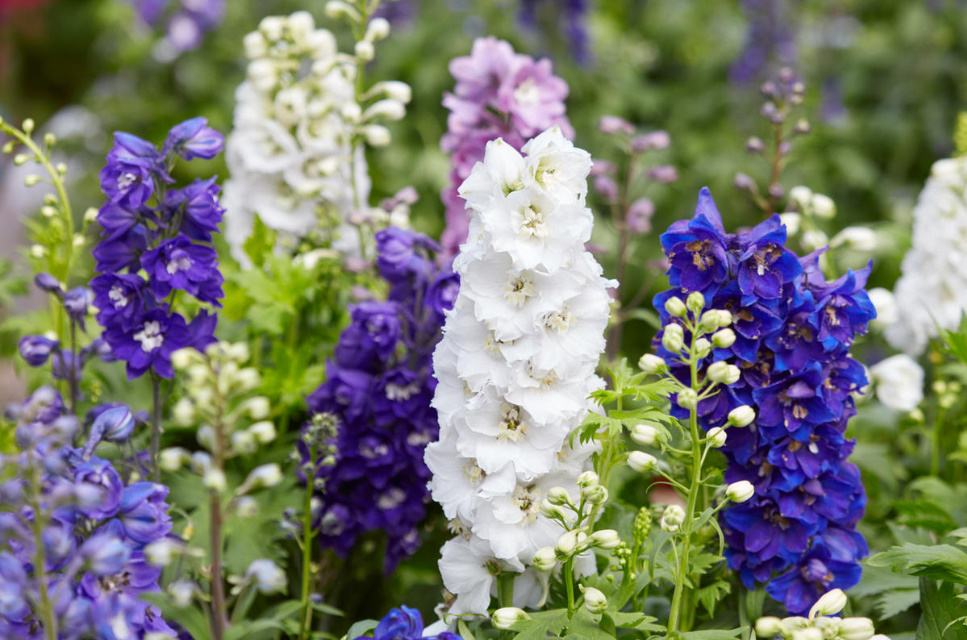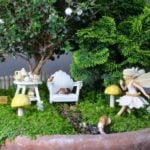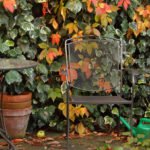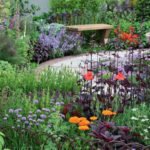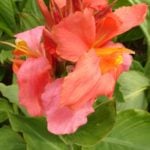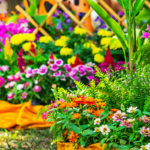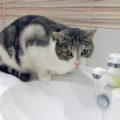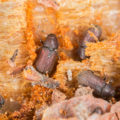Hybrid delphiniums with bright candles of inflorescences in human growth can be safely called the favorites of many gardeners. Take advantage of our dozen ideas and settle stately beauties in your garden!
1. Advantageous neighborhood
Not so many perennials are able to create such a spectacular vertical accent in a flower garden as delphiniums. And although the silhouette of different groups differs, usually the delphinium bush consists of erect, sometimes branched, peduncles ending in spike-shaped or racemose inflorescences.
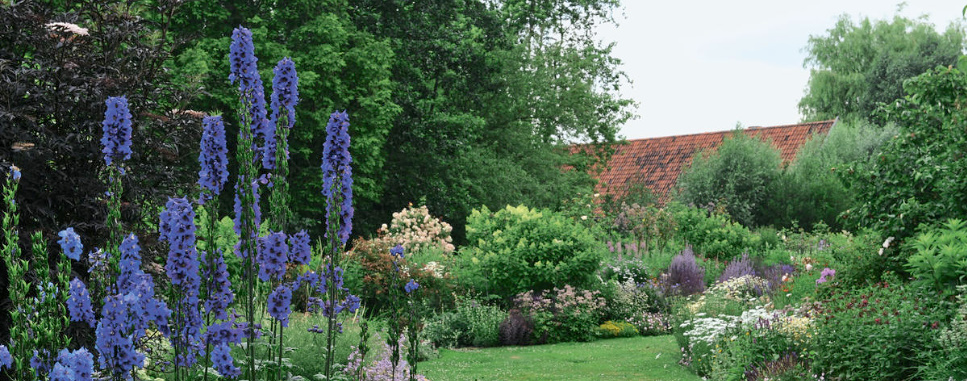
Planting plants in front of delphiniums with flat horizontal inflorescences or with a rounded bush shape will emphasize this effect and help cover the “gap” in the flower garden formed after pruning the faded stems of the delphinium.
2. Playing on otenki and contrasts
Delphinium is associated with the blue color. Indeed, there are not many perennials that can boast of so many pure blue, without impurities, cultivars.
The famous German gardener and breeder Karl Forster wrote that “blue is the color of eternal hope, it makes people happier.” In support of these words, he brought out more than a hundred varieties of delphinium of all shades of blue, which are still popular — from the delicate light blue ‘Sopran’ to the dark blue-purple ‘Tempelgong’.
Blue flower beds really seem like real magic.
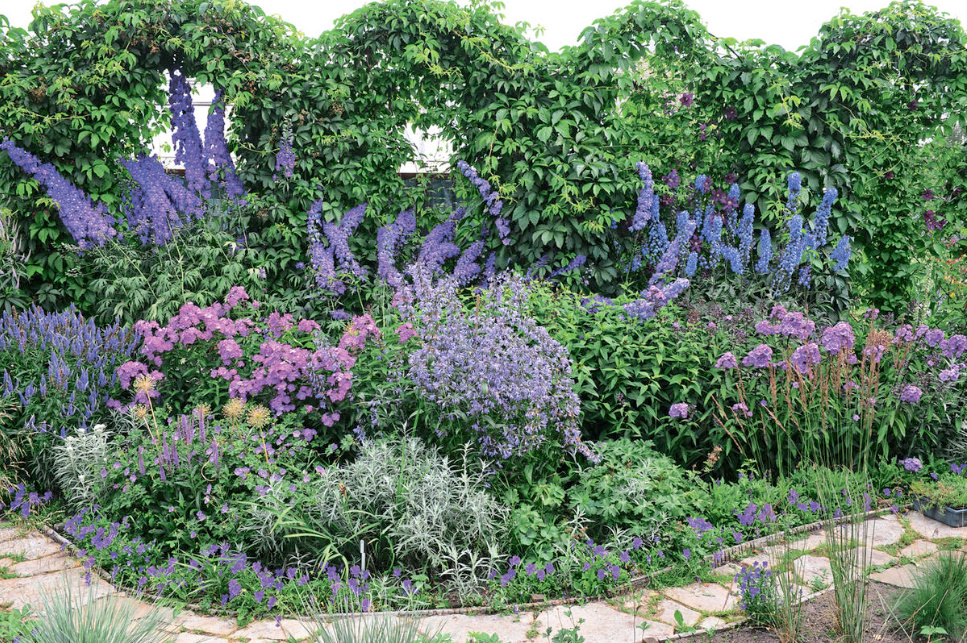
You can play on the contrast and plant a delphinium against the background of shrubs with golden leaves or — in combination with perennials with yellow flowers.
3. A modest wand-a lifesaver, or an Inconspicuous support
Owners of large collections of delphiniums usually tie each plant (or even each peduncle) to an individual support, for example, a bamboo stick. However, such supports violate the harmony of the flower garden and look out of place. No less effective, but much less striking are the low supports that are installed around the perimeter of the bush after it reaches 30 cm in height. These can be semicircular metal barriers on legs or prefabricated structures made of rod.
English gardeners often simply stick branches left over from pruning shrubs next to the delphinium bush — an effective technique with minimal costs. Alternatively, you can tie the delphinium to decorative supports for vines growing nearby.
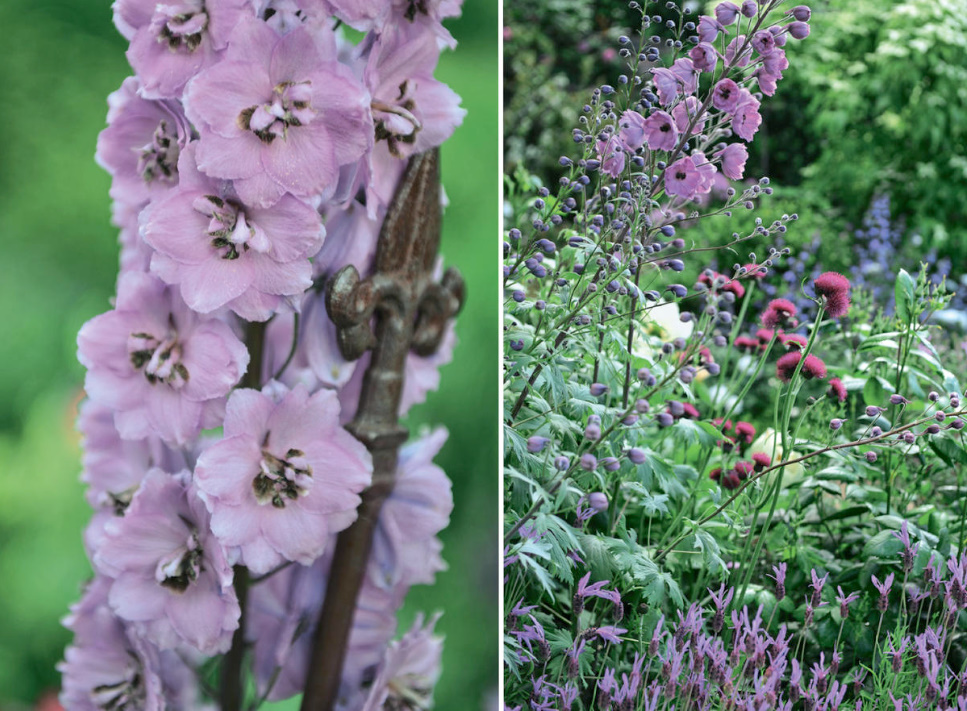
4. Pink romance
Another interesting color theme is a romantic pink flower garden with delicate lavender—purple and pink varieties of delphinium (‘Astolat’, ‘Blushing Brides’, ‘Dusky Maidens’, ‘Fanfare’, ‘Garden Party’, ‘Rosemary Brock’, ‘Summerfield Diana’). Thousands of combinations are possible here, because there are a lot of plants in this color scheme.
5. Snow-white fairy tale
It is difficult to imagine a white garden without snowy and white with a greenish tinge of delphinium varieties (‘Double Innocence‘, ‘Dunsden Green’, ‘Moonlight’, ‘Sandpiper’, ‘Sungleam’, ‘Winnifred Tym’). White varieties of perennials and annuals will become partners here.
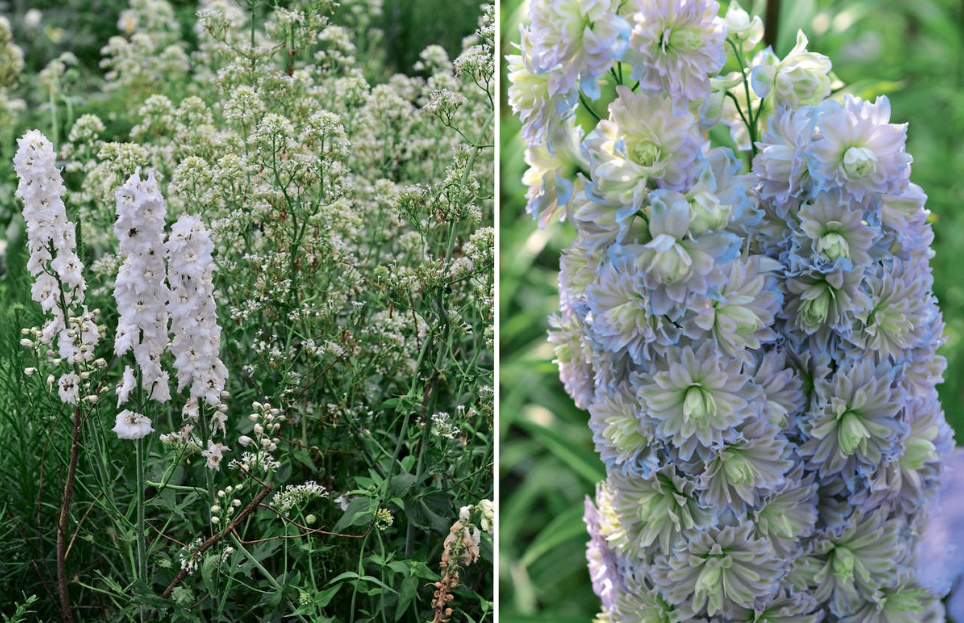
In addition, white delphiniums well reduce the degree of “heat” in hot-toned flower beds with red, orange and yellow flowers and perfectly smooth out color transitions in any flower beds.
6. The “Royal” retinue
Being an object of garden luxury, delphinium perfectly combines with other plants of “royal” appearance: roses, clematis, lilies. And here it is not yet clear who is the retinue and who is the king — rather, it is an equal partnership.
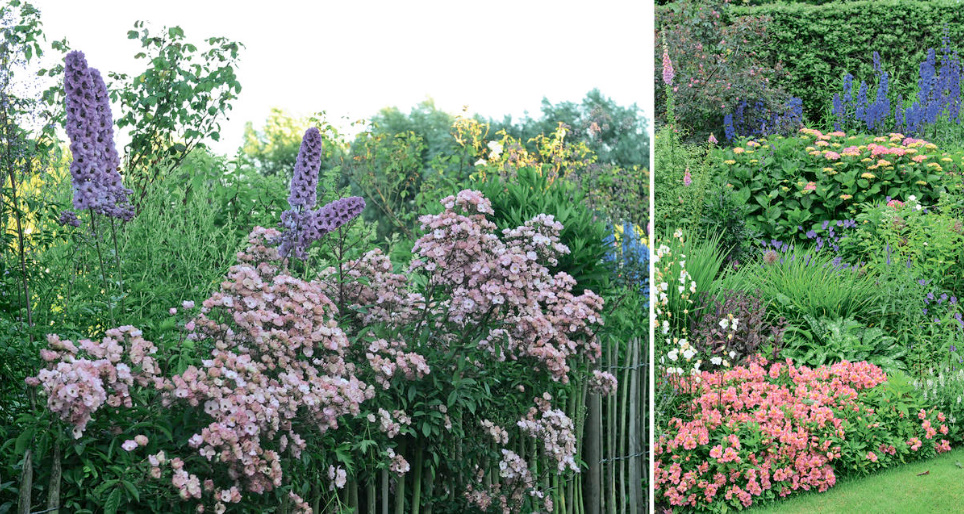
7. Garden in the best English traditions
Delphinium is an iconic plant for the British. Since the time of the famous gardener and designer Gertrude Jekyll, no English mixborder has been without them. And the traditional cottage garden necessarily includes at least one variety of delphinium. And better a few! High varieties are planted in the background, less tall ones can decorate the middle one.
8. Pastoral Symphony
The delphinium will also be its own in the village flower garden.
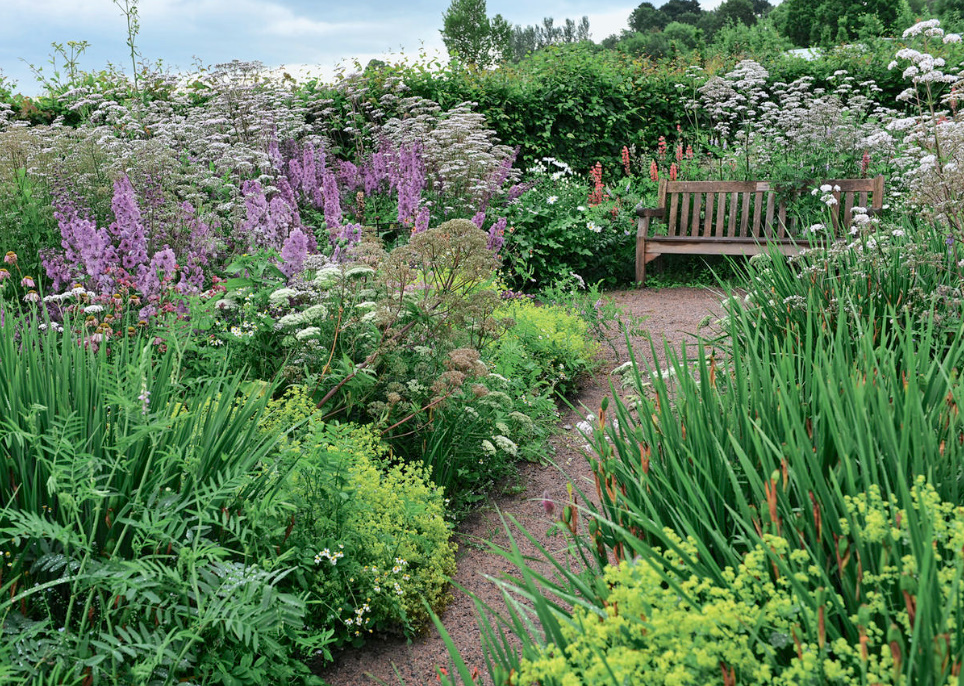
Here he can even be allowed to look slightly disheveled — this will only add charm to the overall picture.
9. “New Wave”? Naturally!
And what about modern meadow flower beds in a natural style? It would seem that such fancy flowers as delphiniums will look defiant and even flashy among partners of a more modest appearance. However, practice shows that a competent selection of neighbors allows you to enter delphiniums in the planting of the “new wave”. At one time, the British invited the Dutch designer Piet Oudolf, known for his meadow flower beds, to break mixborders in the garden of the Royal Society of Gardeners Wisley, but at the same time they asked to plant the delphiniums so beloved by the British. Oudolf masterfully coped with this task.
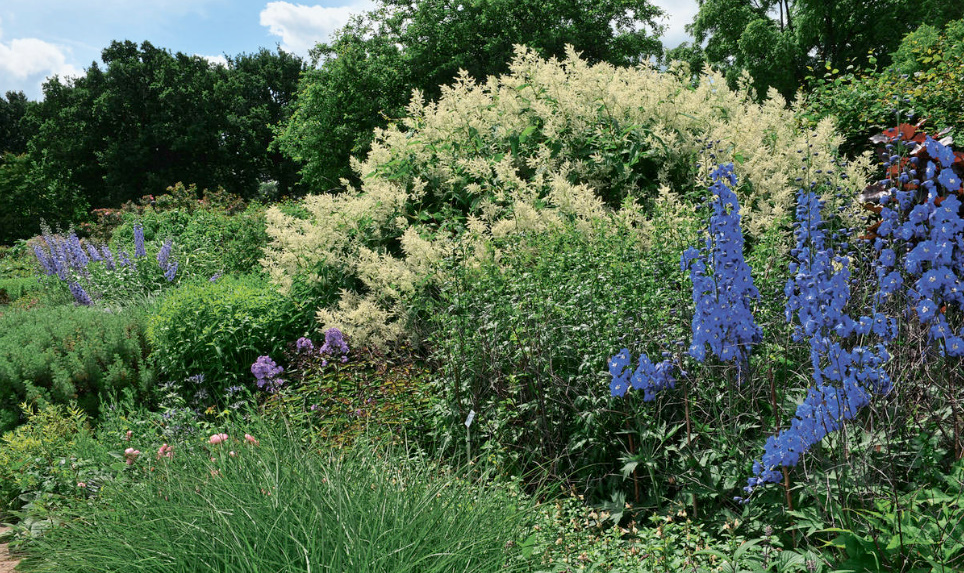
10. “Bouquet” flower beds
Delphiniums can be grown in “bouquet” flower beds. For bouquets, flower stalks with half-opened flowers are chosen, they are cut off early in the morning or in the evening, while it is cool, and immediately put in water. Some series of varieties — Aurora, Guardian, Clear Springs — were specially bred as flowers for cutting.
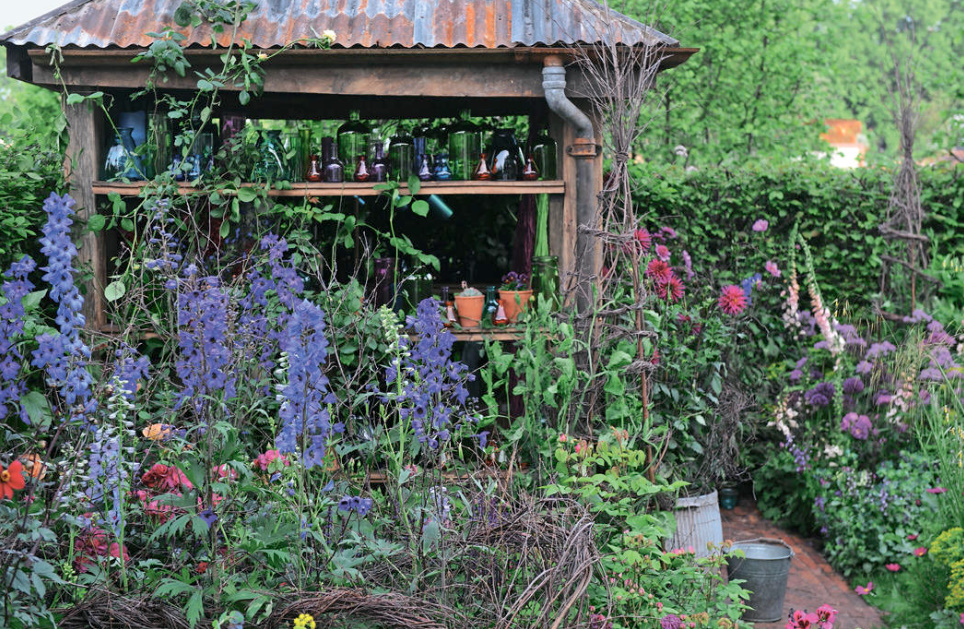
11. The Big Bang flowerbed
You can collect all the delphiniums of your garden in one flower bed, making a real color explosion. Between them, you can plant dahlias or chrysanthemums, which will give the next wave of explosion after the delphiniums bloom.
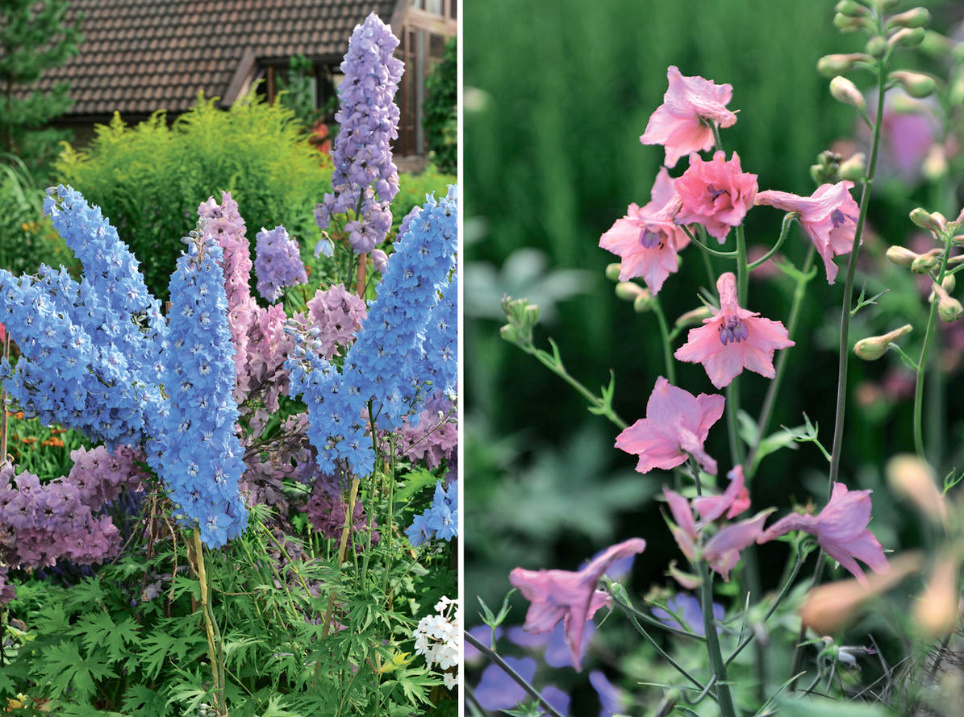
12. Fashion ‘Sensation’
Breeders do not abandon attempts to breed high red varieties of delphiniums, using a miniature American species in hybridization — Delphinium nudicaule with bright scarlet flowers. As a result of experiments, the Dutch breeder Ruys introduced the compact first commercially successful pink variety ‘Pink Sensation’ in 1936. Not so long left to wait for its centenary, while the variety has come back into fashion — it can often be seen in flower beds at the Chelsea Flower Show.
Important: do not forget that delphiniums are poisonous and can cause skin irritation, so it is better to work with them with gloves. Never decorate food dishes with delphinium flowers!
